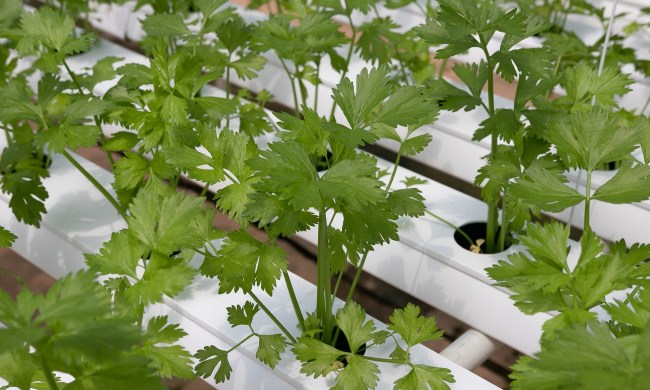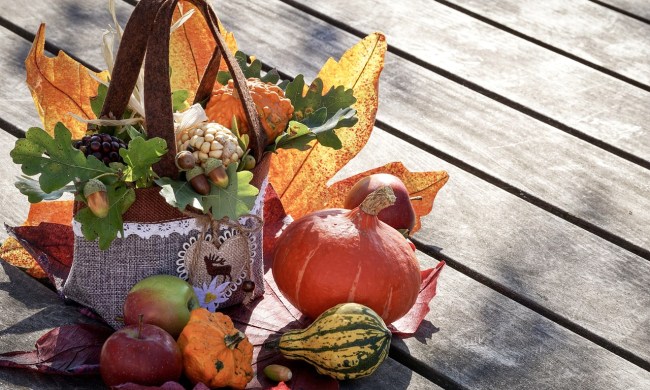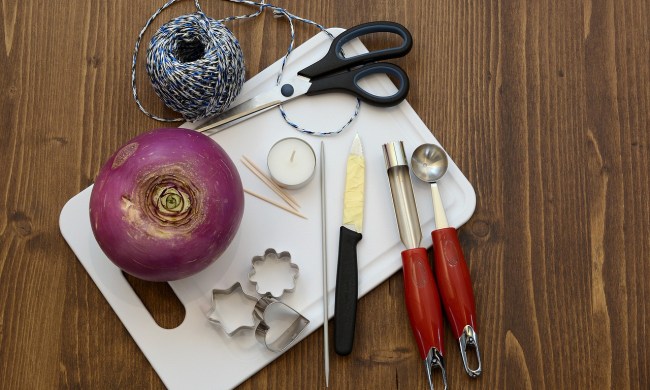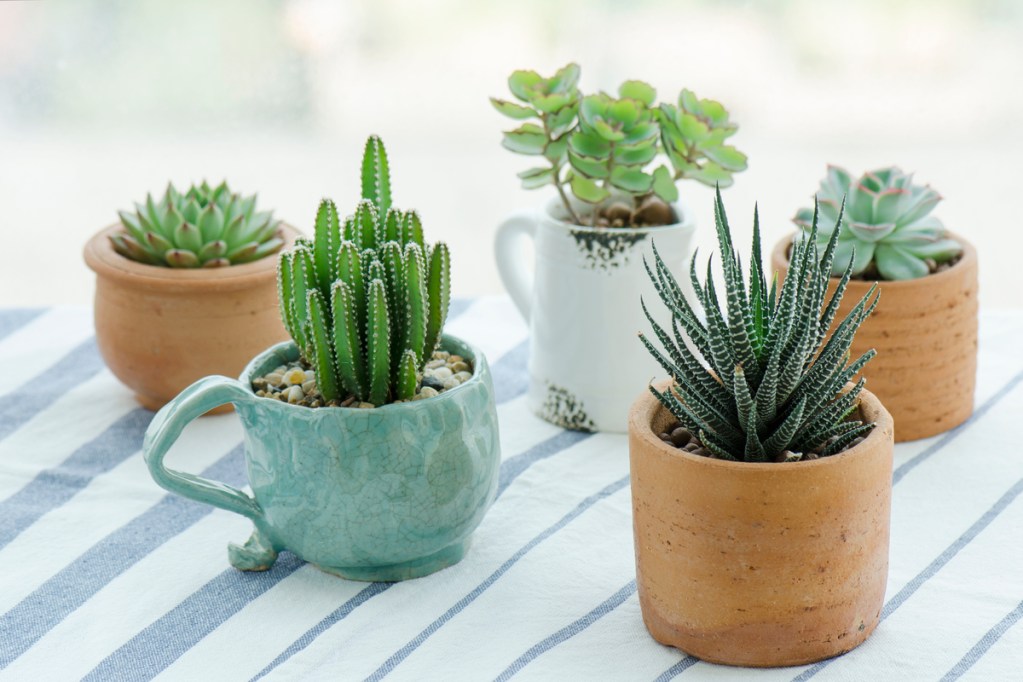
Succulents are known for their hardiness, but they do appreciate extra consideration during the wintertime. Most plants, including succulents and cacti, become dormant during the winter. They need less water, light, and fertilizer, but the trade-off is that they can be damaged by the cold. If you experience especially chilly winters where you live, succulent care can be intimidating. Caring for succulents in winter doesn’t need to be difficult, though. These tips and tricks will help ensure your succulents stay happy and healthy even in the coldest months.
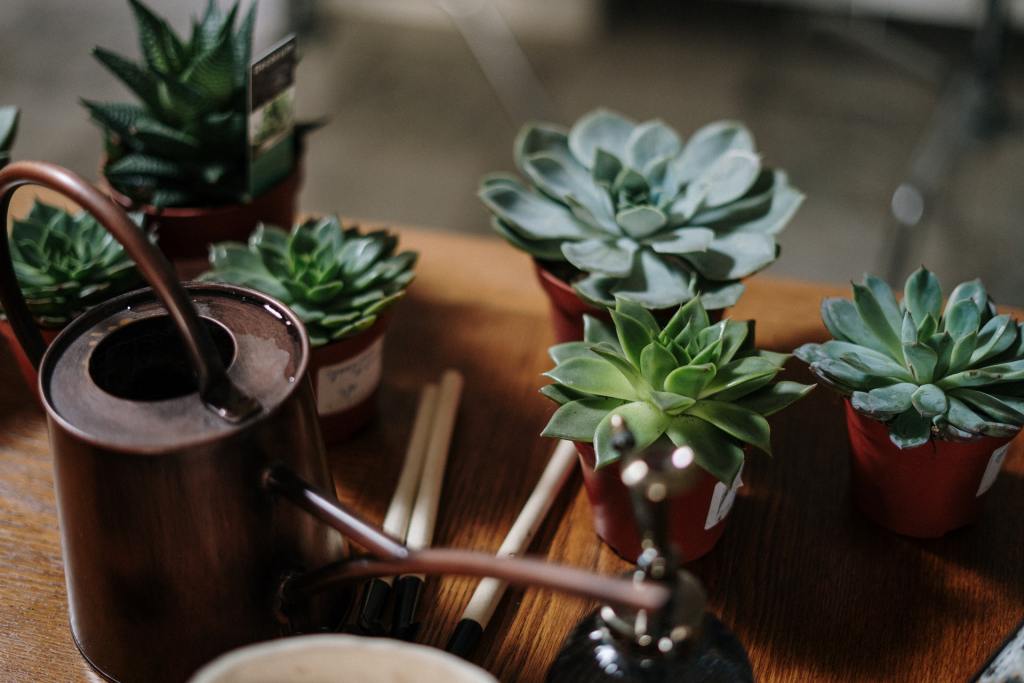
Our ultimate guide to thriving succulents
While you might keep your succulents indoors, they’re still bound to feel the effects of a seasonal transition. Here’s how to make sure the winter weather doesn’t hurt your beloved plants.
Cut back on watering and fertilizing
The cardinal rule of succulent winter care is to cut back on watering. As plants go dormant in the winter, they won’t use as much water, so overwatering can lead to root rot. Water your succulents and cacti thoroughly but infrequently. Once every one or two months should be sufficient for most succulents. The best time to water is when the soil is dried out and the leaves look slightly wrinkled.
Cutting back on fertilizer during the cold season is also a good rule of thumb. Plants do not need food when they go dormant, so get your feeding in before the temperature drops. Too much fertilizer can lead to soft leaves that can rot and fall off.
Bring your succulents indoors
Succulents can tolerate a wide range of temperatures, but they do have their limits. They’re actually sensitive to freezing because their leaves and stems store water. Most succulents are hardy down to 40° or 50° F. When freezing temperatures approach, bring your plants inside to keep them safe. Larger succulents should withstand colder weather, but they can experience frost that damages plant tissue on their surface. Wondering how to keep succulents alive in winter indoors? Give them bright indirect light and don’t overwater them.
Protect your outdoor succulents
If you plan on keeping your succulents outdoors, consider covering them from the cold. While you can buy specialized frost blankets for plants, plenty of household items can do the job. Drape blankets and towels over your succulents and secure them with rocks or bricks. You can also place taped-down cardboard boxes or planters over your succulents to insulate them from frost. Just make sure that there’s ample room around your plant so that the leaves don’t break.
Avoid repotting succulents during the winter
The best times of year to replant your succulents are during spring or fall in milder temperatures. Succulents don’t need to be repotted very often — every two years is usually safe. If you must repot a new or rootbound plant into a larger planter, make sure you use well-draining and lightweight cactus soil. You can buy a ready-made mix or combine one part organic matter (potting mix or coconut coir) with two parts mineral material (perlite or gravel) for ideal drainage.
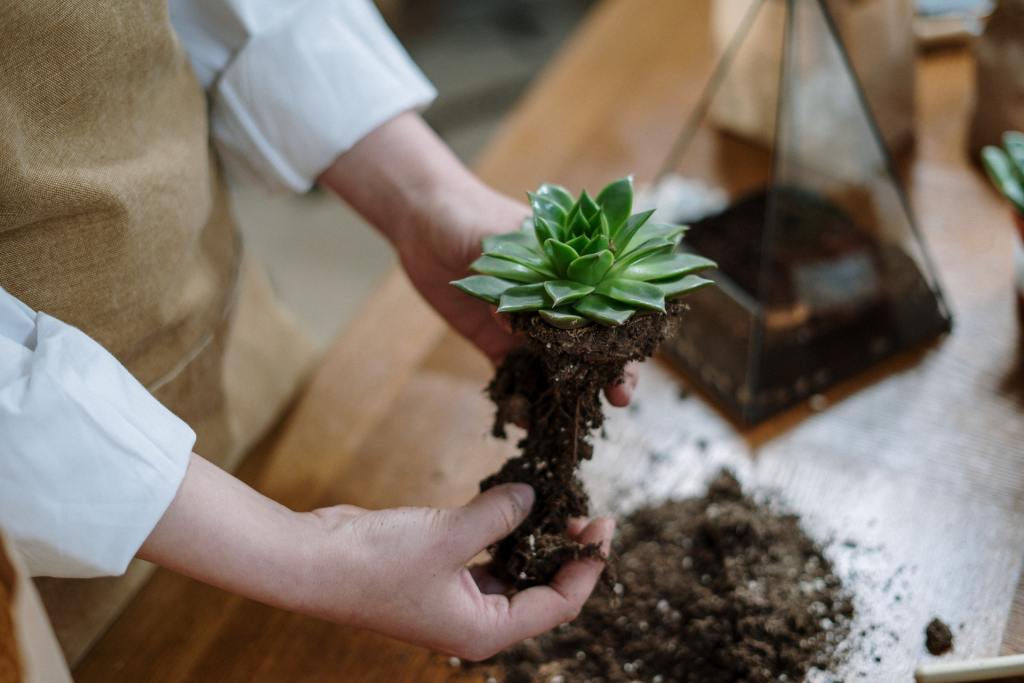
How to care for specific succulents
So, what about specific types of succulents? From echeverias to golden barrel cacti, here are tips on how to care for popular types of succulents in the winter.
Echeveria
Echeverias typically look like stemless rosettes, often developing into jewel-tone colors in sunlight. They’re tender succulents that won’t do well in harsh frosts, so bring them indoors and maintain a temperature of at least 50 degrees Fahrenheit. During the winter, cut back on watering and only give them enough water to keep them from wrinkling. Be careful not to get water on the leaves because they can rot.
Aloe vera
A staple in most garden centers, aloe is an easy-going succulent with fleshy, serrated leaves. Aloe thrives in temperatures between 55 and 80 degrees Fahrenheit. Because aloe vera is mostly water, it dislikes frost. Water your aloe plant roughly once a month during the winter and moisten the soil instead of soaking it.
Golden barrel cactus
You know a golden barrel cactus (echinocactus grusonii) when you see one. These common plants have dark green bodies with sharp yellow spines. The bigger your plant is, the hardier it’ll be against the forces of winter — older golden barrel cacti can even survive in 20 to 25 degrees Fahrenheit. If you keep your cactus indoors, give it as much sunlight as you can and water every other month.
Jade plant
Known for their woody stems and thick, oval leaves, jade plants are another succulent favorite. Also known as crassula ovata, they’re generally easy-care plants but do have specific preferences. They’re not frost-tolerant and should go inside if the temperature dips below 50 degrees Fahrenheit. Jade plants are especially prone to root rot, so only water them when their soil completely dries out. Like echeveria, their leaves may also rot if exposed to too much water.
Christmas cactus
Schlumbergera truncata, or the Christmas cactus, is a winter staple. During the holidays, it will produce colorful blooms when left in long periods of darkness and cold temperatures around 50 degrees Farenheit. Unlike many cacti and succulents, it is native to tropical forests in South America, appreciating water and humidity. While this plant dislikes wet feet, it doesn’t like to be entirely dried out. During the winter, water your Christmas cactus every two to three weeks when the top third of the soil feels dry.
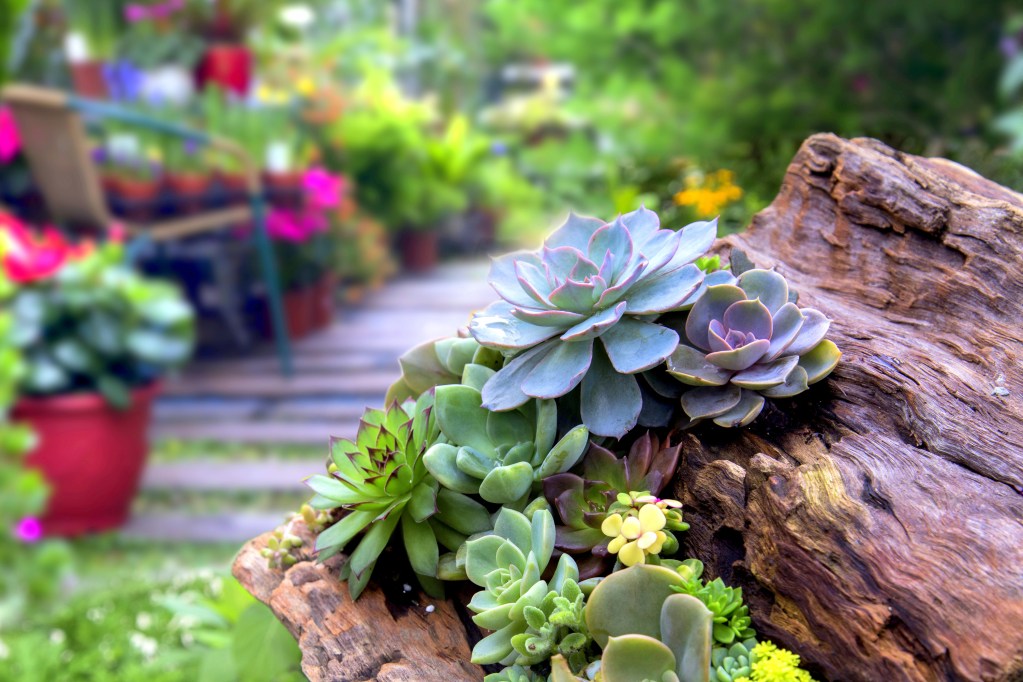
Outdoor succulents in winter
Potted succulents should be brought indoors once the temperatures start to drop below 40 degrees Fahrenheit on a regular basis, but if you can’t bring them inside, then try to provide them with some shelter. This may mean moving potted succulents to a covered patio, placing them under a tree, or simply covering them with a box. Succulents planted in the ground need shelter as well, to keep snow and frost off of their leaves.
Mulch is also useful for keeping your succulents warm. Add a layer of mulch such as straw, dead leaves, or wood chips around the base of your succulents. Potted succulents can benefit from mulch as well. If possible, get your potted succulents off the ground. Even adding a simple layer of cardboard or mulch between the container and the ground will help protect the roots. This prevents the bottom of the succulent pot from becoming too cold once the ground freezes.
If you live in an area known for cold winters, you may want to avoid planting succulents directly in the ground, and instead opt for potted succulents that can be moved during cold weather. If you do choose to grow succulents outdoors, look for a cold hardy succulent such as sedum or Perry’s agave.
Succulent care during the winter boils down to restraint — you’re already ahead of the curve if you hold back on watering and fertilizing! That said, succulents do appreciate extra thought and care. Ensuring that your succulents receive light and stay warm will set them up for beautiful growth once spring arrives and will ensure you’ll still have beautiful green plants around the house on those cold, dreary winter months.

